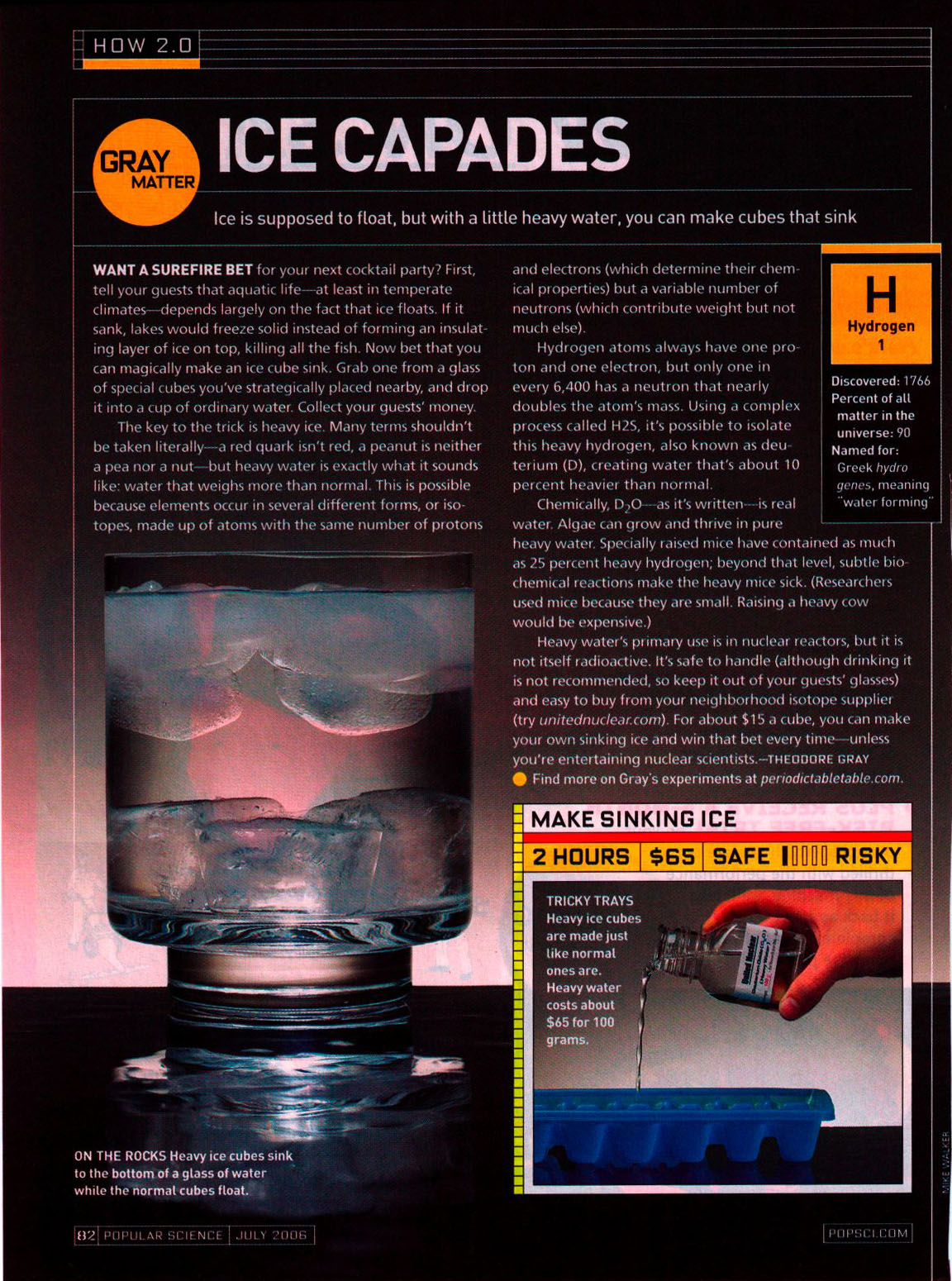Want a surefire bet for your next cocktail party? First, tell your guests that aquatic lifea^\200'at least in temperate climatesa^\200'depends largely on the fact that ice floats. If it sank, lakes would freeze solid instead of forming an insulating layer of ice on top, killing all the fish. Now bet that you can magically make an ice cube sink. Grab one from a glass of special cubes you've strategically placed nearby, and drop it into a cup of ordinary water. Collect your guests' money.
The key to the trick is heavy ice. Many terms shouldn't be taken literallya^\200'a red quark isn't red, a peanut is neither a pea nor a nuta^\200'but heavy water is exactly what it sounds like: water that weighs more than normal. This is possible because elements occur in several different forms, or isotopes, made up of atoms with the same number of protons and electrons (which determine their chemical properties) but a variable number of neutrons (which contribute weight but not much else).
Hydrogen atoms always have one proton and one electron, but only one in every 6,400 has a neutron that nearly doubles the atomA^\271s mass. Using a complex process called H2S, itA^\271s possible to isolate this heavy hydrogen, also known as deuterium (D), creating water thatA^\271s about 10 percent heavier than normal.
Chemically, D2Oa^\200'as it's writtena^\200'is real water. Algae can grow and thrive in pure heavy water. Specially raised mice have contained as much as 25 percent heavy hydrogen; beyond that level, subtle biochemical reactions make the heavy mice sick. (Researchers used mice because they are small. Raising a heavy cow would be expensive.)
Heavy water's primary use is in nuclear reactors, but it is not itself radioactive. It's safe to handle (although drinking it is not recommended, so keep it out of your guests' glasses) and easy to buy from your neighborhood isotope supplier (try unitednuclear.com). For about $15 a cube, you can make your own sinking ice and win that bet every timea^\200'unless you're entertaining nuclear scientists.
Find more on Gray's experiments at periodictabletable.com and at popsci.com/graymatter
|
|

